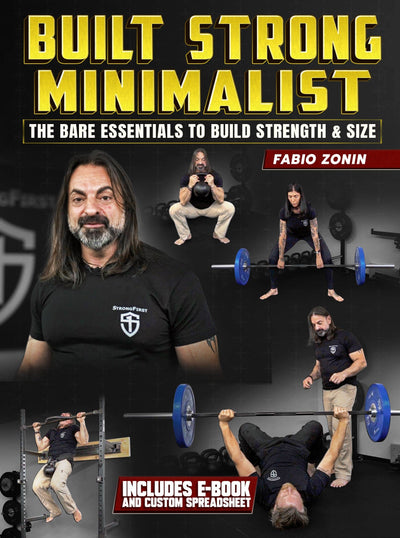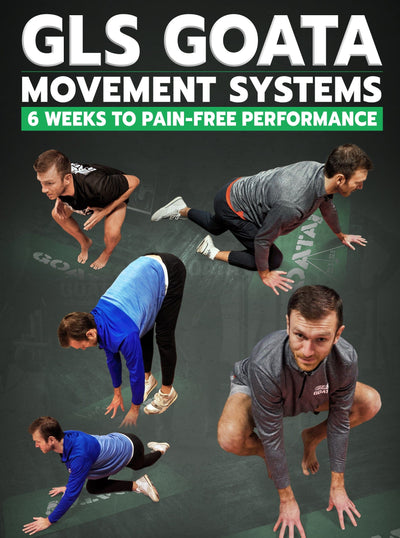Kettlebell Thrust
If you're seeking a highly effective exercise that engages multiple muscle groups while providing cardiovascular benefits, look no further than the kettlebell thrust. This dynamic movement combines the benefits of a squat with an explosive hip thrust, creating a powerful exercise that targets your lower body, core, and even your upper body.
What this article covers:
- Benefits of Kettlebell Thrusts
- Proper Technique
- Banded Kettlebell Hip Thrust
- Kettlebell Hip Thrust Standing
- Kettlebell Squat Thrust
Benefits of Kettlebell Thrusts
The kettlebell thrust, kettlebell hip thrust, or kettlebell thruster, offers a range of benefits that can enhance your overall fitness and athleticism. Firstly, it engages multiple muscle groups simultaneously, providing a full-body workout. Your lower body muscles, including the quadriceps, hamstrings, glutes, and calves, work together to generate power and force. Additionally, your core muscles, such as the abdominals and lower back, stabilize your body throughout the exercise. Furthermore, the upper body, including the shoulders, back, and arms, contribute to maintaining balance and control.
One of the key advantages of kettlebell thrusts is the development of explosive power. The movement involves an explosive hip thrust, mimicking real-life movements like jumping or sprinting. This power development translates into various sports and activities, improving performance and overall athleticism.
In addition to muscle engagement and power development, kettlebell thrusts provide excellent cardiovascular benefits. Performing the exercise at a high intensity raises your heart rate, making it an effective exercise for cardiovascular conditioning. This cardio aspect adds an extra layer of fat-burning potential, promoting weight loss and improving overall cardiovascular health.
Proper Technique
To maximize the effectiveness of your kettlebell thrusts and prevent injuries, it's crucial to maintain proper form. Following the correct technique ensures that you target the intended muscle groups and minimize stress on your joints. Here's a breakdown of the proper technique:
Set-Up: Stand with your feet shoulder-width apart, toes pointing slightly outward. Place the kettlebell between your legs, just in front of you.
Squat Position: Lower your body into a squat position by bending your knees, pushing your hips back, and keeping your chest up. Grip the kettlebell handle firmly with both hands, maintaining a neutral grip.
Explosive Thrust: Initiate the movement with a powerful hip thrust. Drive through your heels, extending your legs and hips while simultaneously swinging the kettlebell forward and upward. Keep your arms straight as the kettlebell reaches shoulder height or slightly higher.
Control the Descent: As the kettlebell reaches its peak, control its descent by bending your knees and allowing the kettlebell to swing back between your legs. Maintain a strong core and avoid rounding your back.
Repeat: Perform the movement fluidly, maintaining control and power throughout the entire exercise. Aim for a series of repetitions that challenge you without compromising form.
Banded Kettlebell Hip Thrust
To further intensify the kettlebell thrust and target your glutes and hamstrings, you can incorporate resistance bands into the exercise. Begin by wrapping a resistance band around your thighs, just above your knees. Set up for the kettlebell thrust as described earlier, but this time, focus on driving your knees outward against the resistance of the band as you perform the hip thrust. The banded kettlebell hip thrust adds extra resistance to the movement, engaging your gluteus medius and maximus to a greater extent.
Kettlebell Hip Thrust Standing
This variation of the kettlebell thrust provides a unique challenge by eliminating the support of a bench or box. Begin by standing with your feet hip-width apart, holding a kettlebell by the handle with both hands in front of your body. Hinge at your hips, keeping your back straight and your chest lifted, and lower the kettlebell between your legs. From this position, explosively extend your hips forward, thrusting your pelvis forward and bringing the kettlebell up to chest height. Focus on squeezing your glutes at the top of the movement and maintaining core stability throughout. The standing kettlebell hip thrust targets the glutes, hamstrings, and core while also challenging your balance and stability.
Kettlebell Squat Thrust
The kettlebell squat thrust is a dynamic variation that combines elements of the kettlebell thrust with a squat. Start by holding the kettlebell by the handle with both hands, allowing it to hang in front of your body. Stand with your feet shoulder-width apart. Lower into a squat position by bending your knees, pushing your hips back, and keeping your chest up. From the squat position, explosively extend your legs and hips, simultaneously swinging the kettlebell forward and upward. As you stand up, press the kettlebell overhead, fully extending your arms. Reverse the movement by bringing the kettlebell back down to the starting position while lowering back into the squat. The kettlebell squat thrust engages your lower body muscles, core, and upper body, making it a highly effective compound exercise.
Incorporating these variations into your kettlebell thrust routine adds variety and challenges your muscles in different ways. Remember to start with proper form and gradually increase the difficulty as you gain strength and confidence. Whether you choose the banded kettlebell hip thrust, standing kettlebell hip thrust, or kettlebell squat thrust, these variations will take your kettlebell training to new heights, helping you build strength, power, and resilience in your fitness journey.
Did you find the blog beneficial? If so, consider exploring our other guides.
- Renegade Rows with Kettlebells
- Kettlebell Gorilla Rows
- The Kettlebell Ballistic Row
- Bent Over Kettlebell Row
- Kettlebell Push Up with Row
- Kettlebell Inverted Row
- Alternating Kettlebell Rows
- Kettlebell Snatch
- Kettlebell Snatch Muscles Worked
- Double Kettlebell Snatch
- The Kettlebell Half Snatch
- Kettlebell Lower Back
- Kettlebell Back Fat
- Kettlebell Cross Back Lunge
- Back Squat with Kettlebells





